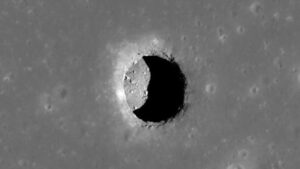Phosphorus has been detected on Enceladus, one of Saturn’s 124 moons. This means that all six elements that are essential for life — carbon, hydrogen, nitrogen, oxygen, phosphorus, and sulfur — occur on this one little moon. It is the first time that phosphorus has turned up in any ocean beyond those on Earth.
Geysers at the south pole shoot a plume of water from the subsurface ocean below the moon’s icy crust into space. The plume adds ice particles to Saturn’s E ring, which sits just outside its main rings.
Enceladus, Saturn’s icy moon, is known for its geysers that erupt with water from a subsurface ocean.
Scientists have just detected phosphorus—an uncommon element that’s a key building block for life—in the plumes that these geysers spray: https://t.co/1XY5X2qtmF pic.twitter.com/2vPvLIvgZh
— NASA (@NASA) June 15, 2023
The Cassini spacecraft flew through this plume and the E ring multiple times. Each time, it collected data and sent it back to Earth. Researchers are analyzing the decade’s-worth of data that it has collected.
They already knew that the ice grains blasted into space contain a number of essential elements and organic compounds needed for life. However, this is the first time that phosphorus has turned up in the ice particles.
The sixth element
“We previously found that Enceladus’ ocean is rich in a variety of organic compounds,” said Frank Postberg, author of the new study. “But this new result reveals the clear chemical signature of substantial amounts of phosphorus…It’s the first time this essential element has been discovered in an ocean beyond Earth.”

Enceladus. Photo: NASA/JPL-Caltech/Space Science Institute
This makes Enceladus one of the most likely places for life to exist elsewhere in our solar system. Phosphorus is crucial for life. Among many other things, it helps form DNA bases and create cell membranes.
Nor does Enceladus have merely trace amounts of phosphorus. If estimates are correct, the concentration of this important element is 500 times higher than we find in Earth’s oceans.
Many suspected that rocks on the moon might be a source of trapped phosphate. That it’s in the ocean is even more exciting. There, it’s readily available for the potential formation of life, Postberg explains.
Although no life has yet turned up on the moon, all the building blocks are there for it to occur.

NASA engineers prepare the Cassini Spacecraft for its launch. Photo: AP Photo/Frank Wiese
NASA’s Cassini Mission has collected data on Saturn and its moons for over a decade. Launching in October 1997, it spent seven years traveling to Saturn and then 13 years exploring it. It was the first mission to orbit Saturn and find an extraterrestrial ocean.
When the spacecraft eventually ran out of fuel, scientists directed it into Saturn’s sterile atmosphere, so that it would not damage any moon that might harbor life. In total, it traveled 7.9 billion kilometers.






